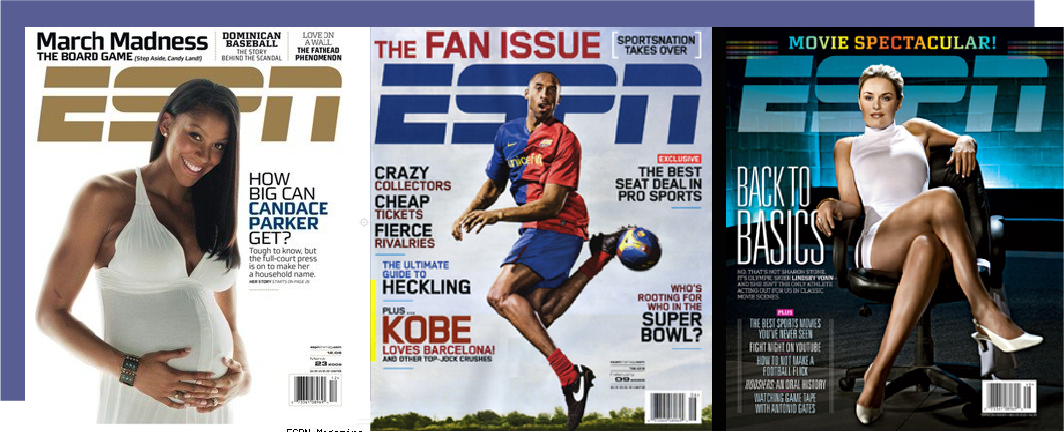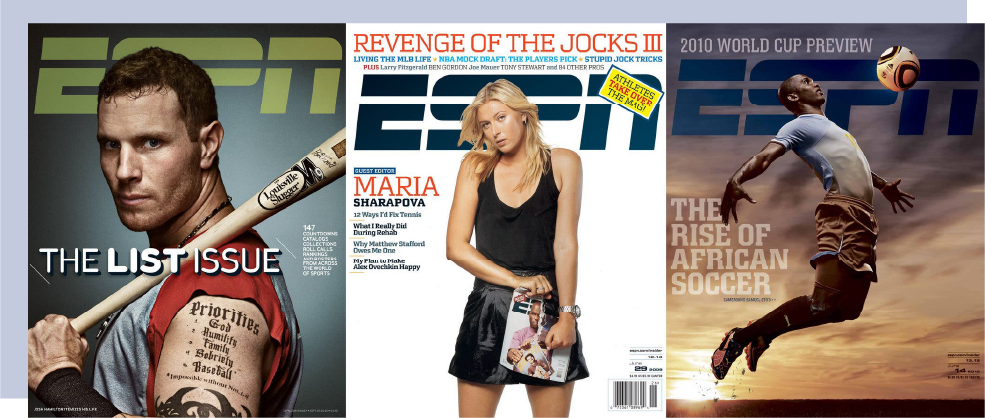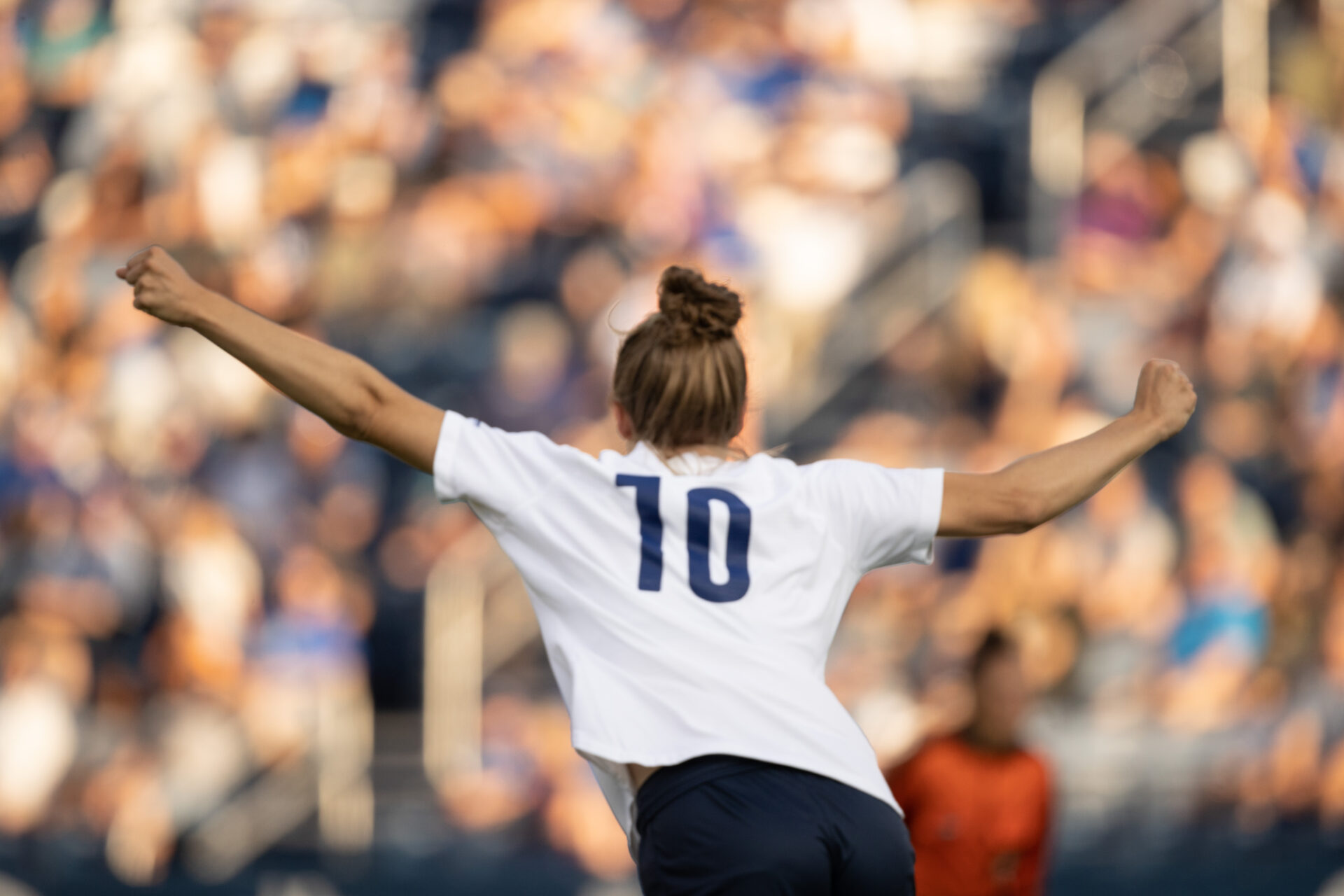Model athletes – The portrayal of women’s sports in media
Story and cover art by Bryn Turner.
This story is part of the March 2022 issue of The Daily Universe Magazine.
Picture a basketball player.
How do they look? Are they tall, muscular or fast? Imagine the athlete’s photo in a magazine. Are they dunking the game-winning shot? Maybe they pose facing you, arms crossed, with an intimidating grin on their face. Either way, you get the feeling that a basketball player is a force to be reckoned with.
Is the basketball player a man?
Now picture a female basketball player. How is she posed? What kinds of words describe her? Can you tell she is an athlete by the pictures in the magazine? Is the story about her record-setting free-throws in the game or about staying in shape? Can you imagine an article about a women’s basketball player at all?
While these questions may seem trivial, those images in your head mean more than you might think.

Women of all ages play sports more now than ever before, according to a report by Purdue University. Yet, women’s sports receive about as much broadcast airtime now as they did in the 1980s. Men’s sports have consistently been broadcasted more than women’s since broadcast transmission of sports was possible. From 1989 to 2019, television coverage of women’s athletics increased 0.5%, with only 5.4% of women’s athletics represented across all airtime.
During the pandemic, interest increased exponentially for women’s athletics: the National Women’s Soccer League (NWSL), Women’s National Basketball Association (WNBA) and the Women’s World Cup were among the most popular groups to receive increased viewership, according to Deloitte Insights. Social media accounts of female athletes and women’s teams have gained increased interest in not only what the women can do athletically, but also who they are as people.
Jennifer Rockwood, the head coach of the BYU women’s soccer team, wants her athletes to get the recognition they deserve on and off the field, “Because they’re unbelievable, unbelievable young women. Not just athletically on the field, which they’re playing their sport at the very highest level…We want to see our athletes that accomplish those things get the recognition they deserve. Any type of recognition that they get is… recognition for all of us.”
Though the coverage is meager, major media platforms that do cover women’s athletics often tend to depict female athletes through a lens of traditional feminine values, like motherhood, beauty, grace and aesthetics.


A 2018 study in Body Image (2019) found female Olympic athletes featured in Sports Illustrated issues are most often posed in ways unrelated to their sport (i.e. posed, facing the camera, smiling, tight clothing). For contrast, the magazine portrayed male athletes predominantly in action with their sport or training, highlighting their endurance and strength. Other international research found that female athletes were often photographed in “passive” poses, compared to the “active” poses of male athletes.
Graduate student Tegan Graham of the BYU women’s basketball team has dedicated her master’s thesis to researching gender equity in sports. As both a consumer of athletic media and often in the limelight herself, she denies the notion that tight clothes and provocative posing is the key to more media representation.
“There’s this myth in the world of sports media– in the media in general– that sex sells women’s sports,” Graham said. “And sex doesn’t sell women’s sports. Sex sells sex.”

A review of images of sportswomen found that “the overt sexualization of athletes has implications for audience perceptions which flow on to broader perceptions about the value of women’s sport.”
Graham, as an athlete and advocate for equity in women’s sports, insists that women’s athletics have value even without objectified marketing. “I think when big corporations tell a female athlete that this is the way you’re going to get attention and brands and money, they’re lying to them, right? Because the sexualization of female athletes does not promote their athleticism, it does not promote their talents and their skills.”
Take a look at this 2019 analysis of 1,587 Instagram images from the primary media accounts of NBC, ESPN, FOX Sports, and CBS Sports. Researchers found that in the overwhelmingly small percentage of female athletes covered, almost half appear in a passive state and outside of their field of play. Male athletes, however, were showcased in athletic positions in 80% of their pictures.
Graham argues that the lack of conversation around gender equality in media representation is that women’s sports are too often thrown under the rug.
“There’s such a small percentage of coverage in general that I think the conversation surrounding (objectification of female athletes) gets less attention because there’s (already) less attention if that makes sense. I think the main key point to promotion of women’s sports and of female athletes is that there’s not enough,” Graham said.
The same study on Olympians found that the amount of muscularization depicted in stories surrounding Olympic athletes had increased over time. This amount of muscularization is not achievable for most people. Due to the well-known correlation between unrealistic body standards in media and unhealthy performance enhancement that follows, this kind of constant athletic portrayal is potentially dangerous to consumers.

“Female body image and female sports is a really complex topic, mainly because of the fact that you kind of have to balance this fine line of highlighting someone’s athleticism while also not trying to make it seem like they are the standard for what that should be,” BYU graduate Macenzi McGuire said.
This year, McGuire joined a start-up media company as the ninth employee out of nine. The other eight coworkers? World-class female athletes, including Alex Morgan, Chloe Kim, Sue Bird and Simone Manuel. The women founded TOGETHXR as a media company with a mission to bring a culture of adequate representation to all groups of people, especially in women’s athletics.
Per the brand’s own words found on TOGETHXR’s website:
“TOGETHXR is where culture, activism, lifestyle, and sports converge. We shatter the often narrow depictions of women in the media with content featuring a diverse and inclusive community of game-changers, culture-shapers, thought leaders, and barrier breakers.”
For McGuire, as a producer of sports content, the work of representation is about showing off dedication, hard work and the mental stamina that goes into a female athlete’s success.
“You’re not getting someone in an interview to talk about, I don’t know, why their stomach looks bigger in one picture than in another,” McGuire said. “You want to know what it is about their actual core strength… You’re wanting to know what kind of exercises a person does to get that fast… You don’t want it to be the focus that they just naturally have those ‘runner legs’ or something like that.”
BYU Associate Athletic Director for Communications and Media Strategy Jon McBride says the athletic communication department strives to give men’s and women’s sports the same amount and quality of coverage.

“For us in athletic communication, what we’re trying to do is make sure we’re providing the same amount of communication resources and talent personnel to be able to cover women’s sports here effectively,” McBride said.
Rockwood explained that the importance of the empowering portrayal of her soccer players has the power to inspire future generations.

“Again, it goes back to inspiring younger athletes that might someday want to come and be a Mikayla Colohan or an Ashley Hatch,” Rockwood said. “I guarantee you Ashley had posters of BYU soccer players in her bedroom before she came to BYU.”
For women of every age, seeing athletes who look like them in the media can be what pushes them to accomplish incredible athletic achievements. Seeing images and hearing comments in media that show respect for the strength and grit of female athletes could push little girls to become record-setting athletes. Maybe when that little girl learns about women who are brave, fast and capable, she’ll picture a basketball player.

